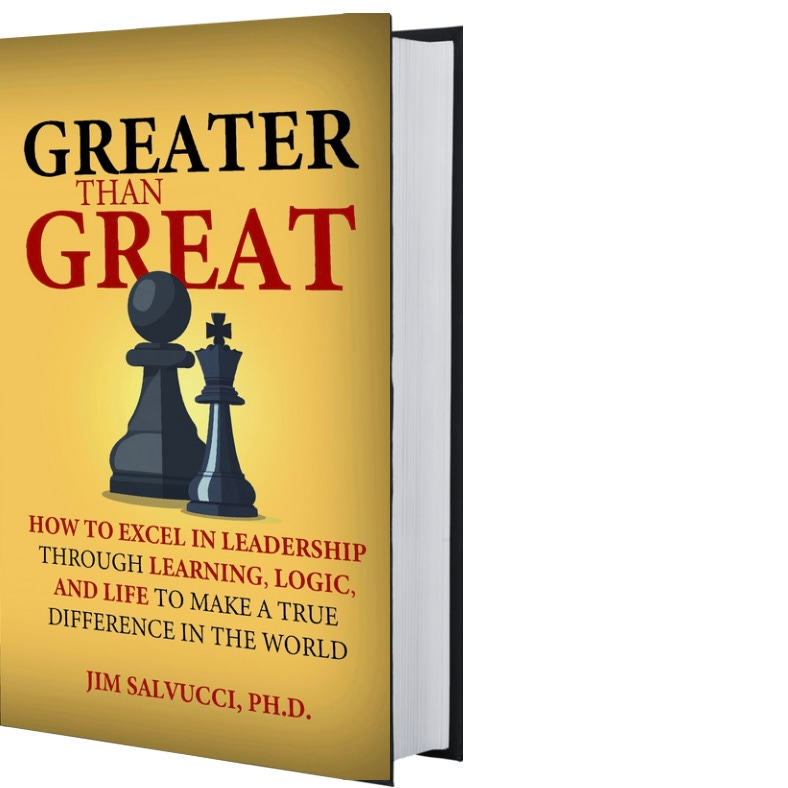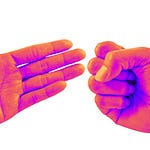Well, I’m hangin’ on to a solid rock
The current fashion is for business leaders to excitedly prattle on about “moving fast and breaking things,” but that’s most often heedless and even childish advice. “Breaking things” only works if you put thought into what comes next, and “moving fast” precludes taking time to care about the future. It’s a dead-end philosophy.
Nonetheless, one of the fundamental challenges of leadership is deciding if, when, and how to disrupt the status quo—to break things.
Which is why I want to talk about rocks.
Think about the last time you held a stone in your hand. How did it feel? Did it nestle in your palm, or did you have to wrap your fingers around it? Was it round or flat? Did it have any heft, or was it just barely there? Maybe it conjured pleasant childhood memories of skipping stones. Or perhaps the stone suggested some weightier connection for you: the monuments we erect, the blocks in a foundation, or jewels that symbolize our love and prestige.
For our purposes let’s just consider the stone in its most conventional sense—as a sizable accretion or concentration of mineral matter. Sexy definition, huh? Imagine that stone fitting your hand perfectly. I want you to experience its mass in your mind, feel its rough surface as you cup it in your palm. Give it a squeeze and appreciate its density.
Now, transport yourself and your rock to the edge of a smooth body of water—it could be a lake, a pond, or a lazy river. The water is so flat and still that it looks solid, impenetrable. The only sound is of a slight breeze moving slowly in the branches of the nearby trees. A pair of ducks paddle mutely toward the shore. Okay, go ahead and arc that stone into the water. Overhand, underhand, as the spirit moves you, just toss it in. What happens?
First there’s a loud kerplunk accompanied by a giant splash as the rock penetrates the placid surface. The explosive shock demolishes the stasis that had stretched out before you. The ducks take to the air in a fright at this disruption of their status quo. That’s a good thing, right—even for ducks—not succumbing to the dull complacencies of the status quo?
Generally, yes, but as Timothy Snyder observes, “Negating an illusion does not generate substance.”
When I was developing my business—Guidance for Greatness—the first name my branding coach proposed was “No More Status Quo.” Initially, that name appealed to me, but something was off. By starting with “no,” it promised rejection and destruction while saying nothing about construction. While breaking things may be necessary to progress, true leadership is about building something new and better.
The Status Bro vs. the Big Splasher
Let’s return to that moment at the edge of the water just before you heedlessly chucked in that rock. Think of the scene as a workplace. As there are two extreme options—do nothing or toss a stone—there are two types of bosses.
There’s the boss who is perfectly satisfied with just pocketing that rock and leaving the water in its calm state indefinitely. Who wants as little disruption as possible. Who wants to play it safe. Who wants to carry on with as little carrying on as possible. We’ll call that one the Status Bro.
And there’s the boss who is wantonly driven to mess things up. Who’s frantic to chuck that rock in. Who thrills at the disruption of tranquillity. How dare those smug ducks float there so contentedly! Who mistakes mayhem for forward motion. This one is the Big Splasher.
The first boss doesn’t take into account that the smooth surface is just a surface. Its smoothness masks all that takes place beneath and all that can happen above. It’s by definition “liminal,” meaning neither in this place nor that place, neither water nor air. A surface is a place of transition between one state and another but is itself nowhere and nothing in particular.
The status quo is the same, liminal. It’s neither this nor that. It demarcates the border of two ways of being—the now and the here-on—and suggests the possibility of transition. The boss who wants to freeze the status quo at all costs is foolhardy. It’s a cowardly stance. Whether from disturbance above or below, no matter how seemingly solid, the surface will certainly transform, and the boss best be prepared.
As silly as the Status Bro is, though, the Big Splasher can be worse. The Big Splasher clearly has no regard for repercussions. It’s not just the initial impact that frightens the ducks and maybe disturbs some fish, but then there are the ripples’ continuous convulsions. As subtle and smooth as they seem, they can be quite turbulent. If you’ve ever been on a small boat when a larger boat zips by, you know what I mean.
I’m sure a fluid dynamics expert could calculate the precise frequency of the ripples this particular rock produces by entering the water at this particular angle and this particular speed. But I doubt whether the Big Splasher puts much thought into it. Therefore, the effects of the ripples are largely unknown. Perhaps they’ll gently come ashore and dissipate, or perhaps they’ll reshape the scene altogether.
Let’s contemplate this scenario, starting with you hurling the stone:
In the aftermath of the rock splashing down, the ripples roll violently across the surface, which dislodges a distant swarm of insects lingering there.
They fly off like our ducks.
Below the surface, fish had been schooling beneath the swarm, enticed by the prospect of a tasty meal. Now they just go on their separate ways.
Because the fish have dispersed, a poor angler downstream misses his opportunity to hook some dinner for his family.
Without fish to feast upon, the angler’s family will go hungry.
The family’s youngest child, Little Suzy, weakened and distracted by hunger, will miss more school.
Having missed too much school, Little Suzy will lose out on scholarships, thus thwarting her dreams of becoming a top cancer researcher.
I’ll leave you to imagine the rest, but why, oh why did you have to throw that damn rock!
Or maybe nothing will happen. I don’t know, and that’s the point. Neither do you, and neither does the Big Splasher. The action of the stone converts the state of the water surface from static to stochastic, and in a stochastic state pretty much anything can happen. Consequences be damned!
Contrast all this—the reckless action of the Big Splasher and the feckless inaction of the Status Bro—with the behavior of the True Leader. The True Leader will study the still surface and consider all the forces that maintain and threaten it.
If change is warranted, how to effect it? A rock would do it, but what of the repercussions? Perhaps a pebble, but the True Leader must account for the ripple effect and the fact that even pebbles sink out of control and out of sight. How about a leaf?
Dropping a leaf onto the surface would break the tension, but the ripples would be modest, barely a whisper. The leaf doesn’t sink but still disrupts and transforms the surface by bonding with it.
If change is warranted, given time enough, the True Leader works with a team to assess all these options and calculate the ripples’ size and effects, both the immediate and the collateral. The team then chooses the moment when disruption will be most constructive and prepares for the coming changes and any cascading downstream impacts. Planning is never perfect, so they must anticipate the unexpected.
Notice that the True Leader is preeminently concerned with consequences, intended or otherwise. The bosses, not so much. How they approach this moment of choice is another difference between leaders and bosses. A boss is limited to looking out over the surface and perceiving only two possibilities—preserve or destroy.
A leader contemplates the entire system and thinks in terms of transformation—how to guide it from one state to another with purpose and care. Unlike the Status Bro, the True Leader has the courage to disturb the surface. Unlike the Big Splasher, the True Leader has the wisdom to consider and guide the aftermath.
The next time you find yourself holding that symbolic stone by the edge of that metaphorical water, remember: the mark of great leadership isn't in the preservation of tranquility at all cost or in the size of the fleeting splash. We can identify great leadership in the care you take to assure positive changes will ripple out from your next action.
How do you approach decisions about disruption and stability as a leader? How do you account for the consequences?
Leaders constantly make decisions on how to approach the status quo, and I can help.
Unlock the Great Leader Within! Download my free resource, the Transform To GREATness Toolkit, now!
I look forward to hearing from you.
Intro and outro podcast theme music by LiteSaturation from Pixabay.
Have you noticed that my podcast sound has improved in recent months?
I started using Descript to record and edit my podcast, and if you record sound and video, so should you. Descript’s AI assistance has transformed my process and improved my recordings. Now editing is a breeze!
Interested? Use my affiliate link to try Descript for free: https://get.descript.com/t8zotbxmi6ds.
Let me know if you try it out and what you think.
Need an experienced speaker or a podcast guest? Invite me!
Need an engaging and experienced speaker for your event? Check out my Speaker’s Page.
Looking for a dynamic and insightful podcast guest? Check out my Podcast Guest Page.
I’m Dr. Jim Salvucci, an author, keynote speaker, coach, and consultant. I served higher education for 30 years as an English professor, dean, and vice president before founding Guidance for Greatness to guide young bosses to become the next generation of great leaders. I’m a certified Tiny Habits coach as well as a certified Thrive Global coach and life coach and hold leadership certificates from Harvard University and the American Council on Education in addition to my Ph.D. from the University of Toronto. Central to my leadership philosophy is that all great leaders are decent humans as well as great teachers, guiding their people and their organizations through values toward success. My goal is to guide today’s young leaders to become the next generation of great leaders by offering practical strategies on values-driven leadership.
Coming Soon!
Look for my new book, Greater than Great: How to Excel in Leadership through Learning, Logic, and Life to Make a True Difference in the World, in early 2025!


















Share this post